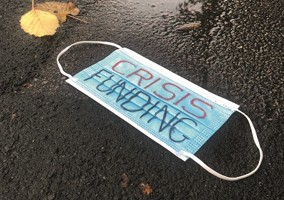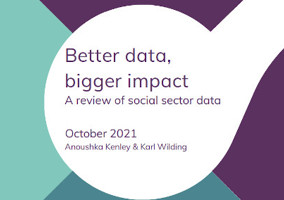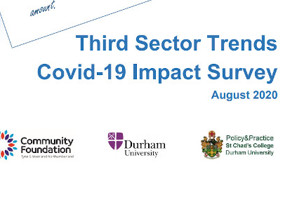The pandemic did not prompt a spike in charity closures, but at the same time fewer new charities have been established, academics have found.
In the final report from a study about the impact of the pandemic on charities researchers found that there was in fact “a sudden drop in the level of dissolutions”, when normally during a crisis there is a sudden uptick in closures.
This appears to contradict surveys carried out in the early days of the pandemic, which warned of imminent closures.
Third Sector Research Centre at the University of Birmingham, University of Stirling, have been analysing charity accounts and data from regulators to conduct a large-scale project about how Covid-19 has affected charities. The project is also supported by the University of Southampton, the Economic and Social Research Council and NCVO.
“We can state with some confidence that the financial turbulence that has affected charities is unprecedented in the two decades or so for which we have financial statistics,” the report concludes.
Fewer closures than expected
Contrary to expectations researchers found that there was not a sudden increase in charity closures.
The report says: “We are also confident in saying that the wave of dissolutions has thus far not materialised, but equally charity formations have not rebounded either.”
However, speaking at a webinar to discuss the findings, Alasdair Rutherford from the University of Stirling, said that support charities received during the pandemic may mean that some organisations were able to continue and the “impact may yet still be to come”.
Responding to the paper, Clare Mills, policy director at the Charity Finance Group, said there is often a lag between financial crisis and insolvencies being recorded.
She said it may be that trustees have not had time to do the paperwork yet.
“When there so much else going on your life, deciding to close a charity might be low on your list of priorities,” she explained.
Duncan Shrubsole, policy director at Lloyds Bank Foundation for England and Wales, was also part of the panel and said: “It is really important to note that those survey’s [warning of closures] weren’t wrong.”
This is because charities give responses assuming things stay the same but in reality they “charities change and adapt”.
He added: “Reduced income does have an impact. It reduces services for groups and communities who need them.”
Drop in spending
Earlier research highlighted the marked falls in income across the sector, with a typical charity seeing its income fall by a “sizeable” 15% in the first few months of the pandemic.
This report also looked at the drop in spending, and found that there was a corresponding drop of 16% for a typical charity.
Researchers also looked at the ratio of income to spending. Before the pandemic the typical charity was spending 95-96% of its income in a given year, yet during the pandemic it was around 90%.
Speaking yesterday, John Mohan from the Third Sector Research Centre, said: “Some organisations are spending much more than they save, whereas some are unable to spend what they have.”
There is also variation across the sector when it comes to the ratio of income to spending.
On the one hand at least 10% of organisations saw their expenditure exceed income by at least 57%. Whereas at the other end of the 10% of charities spent just 35% of their income.
Related articles












